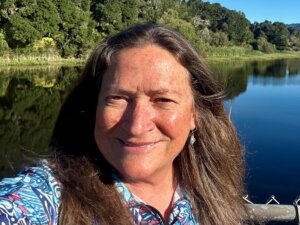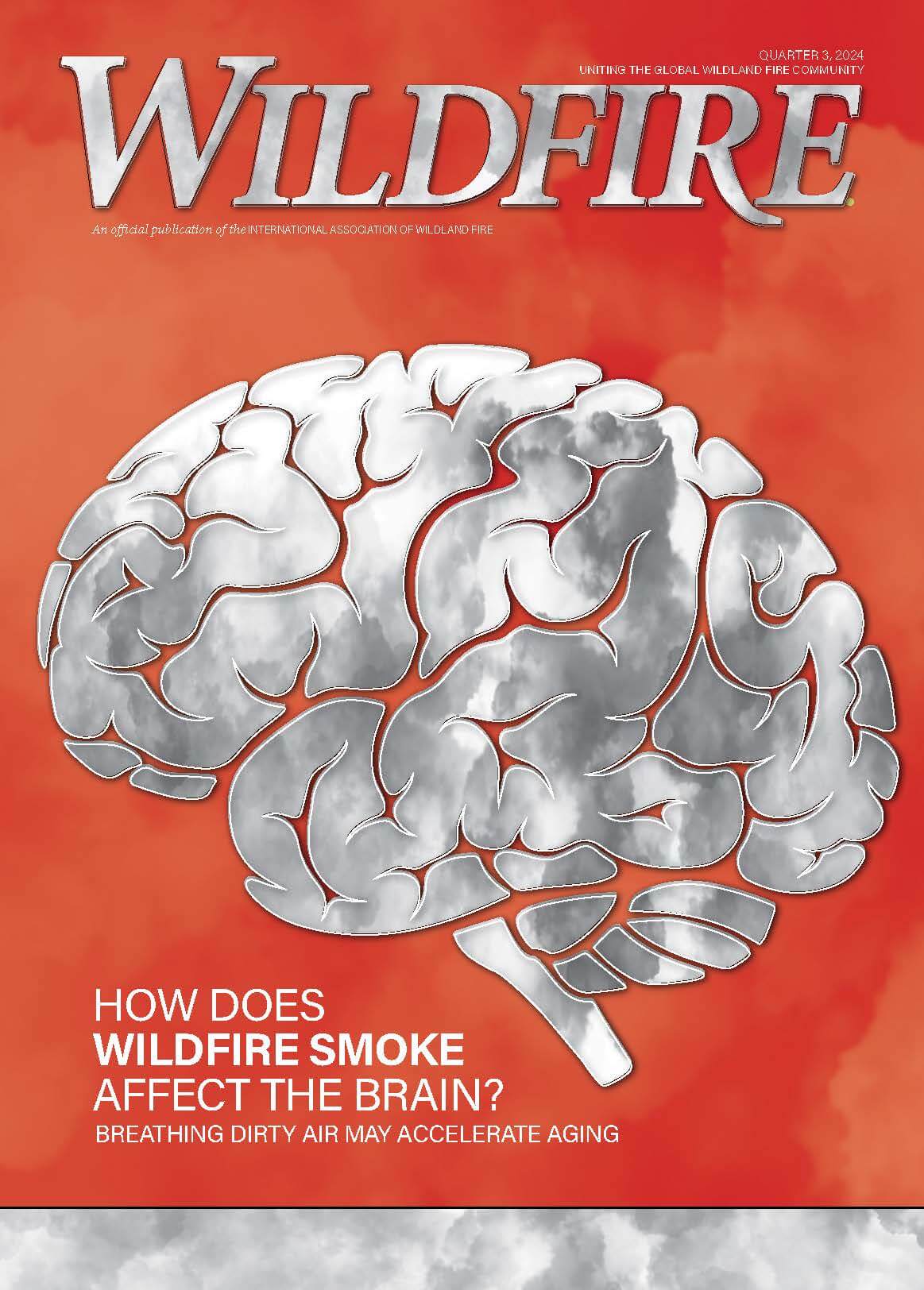LEADING ON A GLOBAL SCALE
BY KELLY MARTIN
It is with great enthusiasm that I extend my warmest congratulations to Trevor Howard as the next president of the International Association of Wildland Fire (IAWF). This prestigious role is a testament to Mr. Howard’s remarkable dedication, extensive experience, and unwavering commitment to the wildland fire community throughout the world.
Mr. Howard possesses a wealth of knowledge and expertise that spans various regions of Australia. His leadership as the national manager of the prescribed burning strategy at the Australasian Fire and Emergency Service Authorities Council (AFAC) has significantly advanced national capabilities in prescribed burning, showcasing Australia’s ability to drive positive change within communities and with practitioners. Mr. Howard has held previous roles with the IAWF, including vice president, and has been a board member since 2022. Mr. Howard is well prepared for this new challenge as he has provided IAWF invaluable insight into the complexities and nuances of wildland fire management on a global scale.
Mr. Howard will lead an esteemed organization that plays a crucial role in facilitating communication and providing leadership for the wildland fire community worldwide. The IAWF’s mission to promote understanding and collaboration among professionals is more important than ever, especially as we face increasing challenges related to climate change and its impact on fire behavior and management practices. Mr. Howard’s vision for inclusivity and innovation will undoubtedly inspire others to engage in meaningful dialogue and work toward sustainable wildland fire solutions.
I am confident that Mr. Howard’s strategic approach will enhance IAWF’s initiatives and foster a collaborative environment within and among countries where diverse perspectives can flourish. Mr. Howard’s commitment to supporting land management agencies and rural fire services aligns perfectly with IAWF’s goals of promoting safety, resilience, and effective management practices across all levels of wildland fire operations.
Congratulations once again to Trevor Howard on this well-deserved achievement. I look forward to supporting Trevor in this leadership position as he guides the IAWF into a new era of growth and excellence. Trevor’s dedication will surely leave a lasting impact on the global wildland fire community.
As I step down from my role as IAWF president, I am filled with gratitude for the people who selflessly volunteer their time to serve others and the greater good of the international wildland fire community. This opportunity has taken me to many conferences; along the way I have met new friends and colleagues. The more I am involved with IAWF, the more I feel my knowledge expanding in ways I could not have dreamed of.
Joining a community of fire professionals offers unlimited opportunities to connect with people who are passionate about the same things you are. The more people can connect, the more opportunities for the synergy to develop into new and emerging solutions. We cannot solve problems facing people and communities until we can come together as people and communities in collective and collaborative ways. I urge you to consider joining IAWF as a member of a worldwide network of professionals.
We cannot solve problems facing people and communities until we can come together as people and communities in collective and collaborative ways.
Lastly, I would like to share the concept of integrated fire management (IFM), also known as the 5 Rs, to conceptualize the full cycle of fire management and still value the interconnectedness of the whole. Our problems are becoming more complex and global; here is one way to distill the components and complexities of fire management into segments that are understandable and achievable at individual and a community levels. In 2024 the Food and Agriculture Organization of the United Nations published the second edition of the Integrated fire management voluntary guidelines, which includes the 5 Rs.
Phase 1: Review and analysis
Understanding the current condition of a home, a community or landscape sets the beginning of our work and gives us a base from which to start and to return to. At this first phase we learn about vulnerabilities and define the ecological, social, political and economic factors that will influence our work.
Phase 2: Risk reduction
What are the known and the potential unknown risk factors that must be considered when developing an IFM plan? Work from the single house out into the community. What are the actions that can be taken by individual homeowners? Adopt zero-to-five-foot clearance around your home; assess areas of your house that can harbor embers and develop into a fire; home hardening and reducing hazardous fuels.
Phase 3: Readiness
As fire season approaches take personal actions to prepare you home and property to withstand and recover from a wildfire. Practice evacuations with your local sheriff and police departments. Develop a friends and family emergency notification process.
Phase 4: Response
A wildland fire response can take many forms from aggressive suppression to limited response in remote and / or wilderness areas. More communities are participating in prescribed burn associations and learning how homeowners can “Learn to Burn” on their properties and support community vegetation reduction so that when a wildfire does impact a community, actions have been taken to reduce damages.
Phase 5: Recovery
The impacts of some wildfires can be severe, damaging homes, infrastructure, water supplies, and ways of life. Due to ever increasing severe damage from contemporary wildfires, the recovery process helps communities for months, or sometimes years, depending on the need.
Thank you for giving me this opportunity to serve you and our fire community. I look forward to meeting you all again soon.
 Kelly Martin has been an IAWF board member since 2019, when she retired as chief of fire and aviation, Yosemite National Park, National Park Service, Pacific West Region. Martin began her federal career as a GS-3 with the Apostle Island National Lakeshore in 1984 while attending college and worked her way up through the wildland fire ranks during her 34-year career. Martin is the past chair of two National Wildfire Coordinating Group (NWCG) programs: Fire Environment Committee (FENC) and the National Fire Management Leadership (M-582) course. Martin is a strong advocate for diversity, inclusion and gender parity throughout the wildland fire community. Her most recent efforts include providing leadership for the Women in Fire Training Exchange (WTREX) since 2016.
Kelly Martin has been an IAWF board member since 2019, when she retired as chief of fire and aviation, Yosemite National Park, National Park Service, Pacific West Region. Martin began her federal career as a GS-3 with the Apostle Island National Lakeshore in 1984 while attending college and worked her way up through the wildland fire ranks during her 34-year career. Martin is the past chair of two National Wildfire Coordinating Group (NWCG) programs: Fire Environment Committee (FENC) and the National Fire Management Leadership (M-582) course. Martin is a strong advocate for diversity, inclusion and gender parity throughout the wildland fire community. Her most recent efforts include providing leadership for the Women in Fire Training Exchange (WTREX) since 2016.